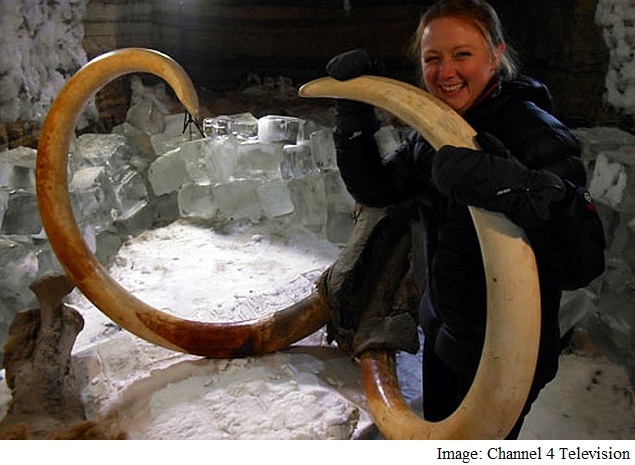- Home
- Science
- Science News
- Mammoth Cloning Closer to Reality With Discovery of Well Preserved Specimen
Mammoth Cloning Closer to Reality With Discovery of Well-Preserved Specimen

With the discovery of the best-preserved specimen of a mammoth found so far, cloning of the woolly animal is closer to becoming a reality, scientists report.
Nicknamed "Buttercup", the mammoth was discovered on Maly Lyakhovsky Island, Siberia in 2013 and excavated from the permafrost.
The flesh was so well-preserved that it oozed a dark red liquid when scientists cut into it, phys.org reported.
An autopsy on the 40,000-year-old mammoth yielded blood which could contain intact DNA and make cloning possible.
The discovery has excited scientists working for years to bring back the extinct elephant relative.
(Also See: Scientists in Japan Make Mice Transparent)
"Coming face-to-face with a mammoth in the flesh and being up to my elbows in slippery, wet, and frankly rather smelly mammoth liver, counts as one of the most incredible experiences of my life," explained paleontologist Tori Herridge.
Tests are still being conducted to see if the blood will yield a complete genome - the genetic code necessary to build an organism.
The liquid has now been confirmed as blood, following the autopsy conducted by scientists.
The full results of the autopsy were shown in a documentary titled "Woolly Mammoth - The Autopsy" on the British network Channel 4.
Get your daily dose of tech news, reviews, and insights, in under 80 characters on Gadgets 360 Turbo. Connect with fellow tech lovers on our Forum. Follow us on X, Facebook, WhatsApp, Threads and Google News for instant updates. Catch all the action on our YouTube channel.
Related Stories
- Samsung Galaxy Unpacked 2025
- ChatGPT
- Redmi Note 14 Pro+
- iPhone 16
- Apple Vision Pro
- Oneplus 12
- OnePlus Nord CE 3 Lite 5G
- iPhone 13
- Xiaomi 14 Pro
- Oppo Find N3
- Tecno Spark Go (2023)
- Realme V30
- Best Phones Under 25000
- Samsung Galaxy S24 Series
- Cryptocurrency
- iQoo 12
- Samsung Galaxy S24 Ultra
- Giottus
- Samsung Galaxy Z Flip 5
- Apple 'Scary Fast'
- Housefull 5
- GoPro Hero 12 Black Review
- Invincible Season 2
- JioGlass
- HD Ready TV
- Laptop Under 50000
- Smartwatch Under 10000
- Latest Mobile Phones
- Compare Phones
- Redmi Note 15 5G
- Redmi Note 15 Pro 5G
- Redmi Note 15 Pro+ 5G
- Lava Play Max
- Poco C85 5G
- Honor Magic 8 Lite
- Jolla Phone
- Realme P4x 5G
- Asus ProArt P16
- MacBook Pro 14-inch (M5, 2025)
- OnePlus Pad Go 2
- Poco Pad M1
- Just Corseca Skywatch Pro
- Honor Watch X5
- Acerpure Nitro Z Series 100-inch QLED TV
- Samsung 43 Inch LED Ultra HD (4K) Smart TV (UA43UE81AFULXL)
- Asus ROG Ally
- Nintendo Switch Lite
- Haier 1.6 Ton 5 Star Inverter Split AC (HSU19G-MZAID5BN-INV)
- Haier 1.6 Ton 5 Star Inverter Split AC (HSU19G-MZAIM5BN-INV)

















